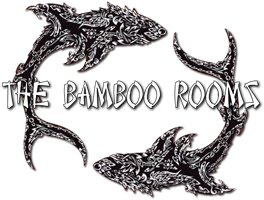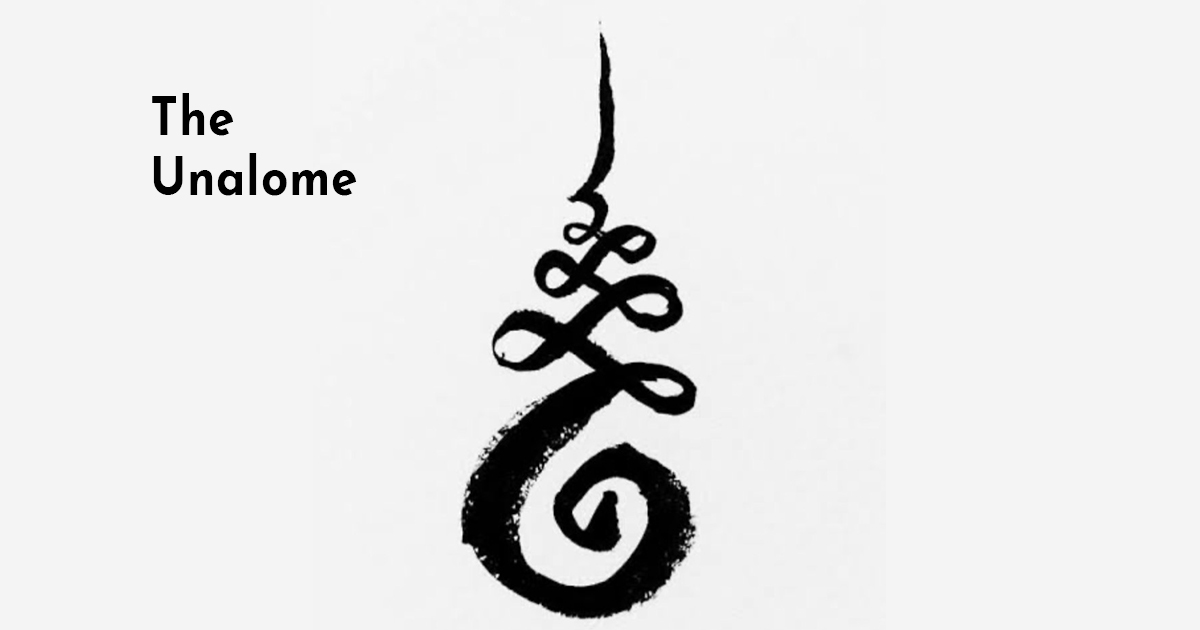The Unalome is a simple, elegant symbol that has intrigued people around the world for centuries with its simplistic design, yet profoundly spiritual meaning. It has deep roots within Buddhist and Hindu traditions and is often associated with the spiritual path to enlightenment.
The Unalome symbol originated in Southeast Asia, particularly in the area now occupied by Thailand, Cambodia, and Laos. Its roots can be traced back to ancient Hindu and Buddhist cultures, where it was integrated into various aspects of spirituality and meditation. The word “Unalome” itself is a compound of two terms: “Una” and “Lome,” where “Una” refers to the beginning or starting point, and “Lome” signifies the end or enlightenment.
In Buddhism, it symbolizes the path towards achieving enlightenment, with the straight line at the top representing the enlightened state of Buddha. In Hinduism, the Unalome is linked to the Kundalini, a dormant spiritual energy coiled at the base of the spine. The spiral of the Unalome represents the awakening and ascension of this energy, leading to spiritual enlightenment.
Unalome designs are characterized by a distinctive spiral pattern that typically begins at the base of the design which then spirals and zigzags its way upward, eventually leading to a straight line at the top. This visual representation symbolizes the journey of life, filled with ups and downs, and the eventual attainment of enlightenment or Nirvana. The spirals symbolize the struggles, challenges, and distractions that individuals encounter throughout their lives. As the spiral winds its way upward, it represents the progress and personal growth achieved through these trials.The straight line at the top of the Unalome represents the ultimate goal of enlightenment, a state of pure consciousness, and spiritual awakening.
The Unalome has been incorporated within the sacred Sak Yant tattoos that have been tattooed in Southeast Asia, particularly in Thailand and Cambodia, for centuries. These tattoos are deeply rooted in local animist and Buddhist beliefs and are often received as a form of spiritual protection and empowerment. Traditionally these have been performed using the ancient bamboo tattoo method which is still used today by all the artists at The Bamboo Rooms.
In Sak Yant tattoos, the Unalome may be incorporated into more extensive designs or serve as a standalone symbol. These tattoos are believed to provide the wearer with spiritual guidance and protection throughout their life’s journey. The Unalome within a Sak Yant tattoo not only represents the path to enlightenment but also acts as a symbol to highlight and strengthen the individual blessings given by each Sak Yant. In effect making the Sak Yant stronger and more powerful.
While the basic structure of the Unalome remains consistent—a winding spiral leading to a straight line—the design can vary in complexity and meaning. Some Unalome designs include additional elements such as lotus flowers, which symbolize purity and spiritual growth. The number of loops and twists in the spiral can also vary, with more intricate designs representing a more arduous spiritual journey.
1. Classic Unalome:
The classic unalome is the foundational style of this symbol. It consists of a simple spiral leading to a straight line. This design embodies the essence of life’s journey, marked by both highs and lows. The spiral represents the path one travels, filled with twists and turns, while the straight line signifies the ultimate goal of reaching enlightenment. It is a powerful reminder of the challenges that must be overcome to attain spiritual awakening.
2. Double Spiral Unalome:
In the double spiral unalome, we encounter a more complex and intricate variation. Here, two spirals are intertwined, signifying a life path with multiple twists and turns. This style suggests that the journey to spiritual enlightenment may involve numerous challenges and lessons, emphasizing the resilience and persistence required to reach a state of awakening.
3. Lotus Unalome:
The lotus unalome incorporates a lotus flower at the base of the symbol. The lotus, a powerful and revered symbol in many Eastern cultures, represents purity, rebirth and enlightenment emerging from the mud of worldly existence. This style conveys the idea that beauty and spiritual growth can arise from challenging or adverse circumstances, reminding us that enlightenment can flourish in unexpected places.
4. Moon Unalome:
The moon unalome introduces a straight line resembling a crescent moon into the design. This element symbolizes that the path to enlightenment, much like the phases of the moon, may not always be straightforward. It teaches us the value of patience and highlights the cyclical nature of life’s journey. Just as the moon waxes and wanes, our spiritual progress may have its ups and downs.
5. Geometric Unalome:
Geometric variations of the unalome introduce intricate patterns and shapes into the symbol. These designs symbolize the interconnectedness of all things and the multifaceted nature of life’s journey. Geometric unalomes are a contemporary interpretation that adds depth and complexity to the traditional symbol, reflecting the intricate web of experiences that shape our spiritual paths.
6. Inverted Unalome:
Flipping the unalome upside down changes its meaning significantly. An inverted unalome suggests that enlightenment is not an external goal to be reached but is already present within oneself. It signifies the process of self-discovery and inner awakening, emphasizing the idea that true enlightenment begins by looking inward.
7. Floral Unalome:
The floral unalome incorporates floral elements, such as vines, leaves, or flowers, into the design. These additions symbolize growth, transformation, and the beauty that can emerge from one’s spiritual journey. The combination of the unalome with floral motifs reminds us that, like a flower, our spiritual selves can bloom and flourish.
8. Watercolor Unalome:
Watercolor-style unalomes employ vibrant and flowing colors to give the symbol a more artistic and contemporary look. The fluidity of watercolors represents the dynamic and ever-changing nature of life and personal growth. This style suggests that the journey towards enlightenment is not rigid but adaptable and responsive to life’s twists and turns.
9. Dotwork Unalome:
Dotwork unalomes use stippling or dot patterns to create the symbol’s lines and curves. This style adds a sense of intricacy and depth to the design, emphasizing the idea that the journey to enlightenment is composed of many individual experiences and moments. Just as each dot contributes to the overall pattern, every experience contributes to our spiritual growth.
10. The “Elephant Unalome”:
It is a unique and culturally inspired tattoo design that combines the graceful spiral of the Unalome symbol with the majestic silhouette of an elephant. This fusion combines the traditional traits of the Unalome and blends them with the inner strength and wisdom associated with elephants. It is a powerful and visually striking symbol of one’s spiritual journey.
The diverse styles of unalome symbols serve as a testament to the universal human quest for spiritual growth and enlightenment. From the classic unalome to the dotwork variation, each style offers a unique perspective on the journey of life and the pursuit of higher consciousness. Whether you resonate with the simplicity of the classic design or the complexity of the geometric interpretation, the unalome reminds us that our spiritual paths are as varied and beautiful as the symbols themselves. Ultimately, the unalome invites us to embrace our individual journeys, with all their twists and turns, as we strive towards the light of enlightenment.
We hope you enjoyed reading.
Keng and Lauren
The Bamboo Rooms®





